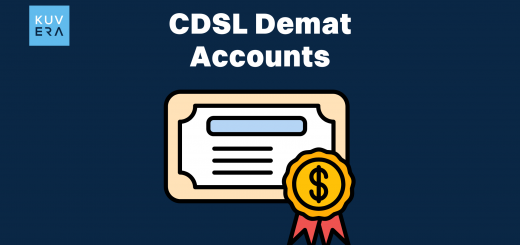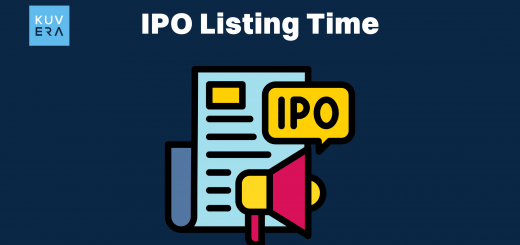So, what are interest rates? They’re the lifeblood of the financial world. Market fluctuations due to rate changes can unsettle many investors, but a savvy few see opportunity in these shifts. Their secret weapon? Long Duration Funds, poised to benefit when rates move in the right direction. Choosing mutual funds India requires careful assessment, and long duration funds are typically suited for those with a higher risk appetite and a long investment horizon.
Investment decisions related to long duration mutual funds require a good understanding of risk and return. Let’s dive in and uncover how they work and if they’re right for you.
What are Long Duration Funds?
Definition and Basic Explanation
Long duration funds are a specialised type of debt mutual fund that focuses on bonds with long maturity dates – generally, those stretching out beyond seven years. This extended timeframe makes them particularly sensitive to interest rate fluctuations. The landscape of mutual funds India offers various strategies, and long duration funds represent a tactical choice for those anticipating interest rate declines.
Picture a seesaw: on one side are interest rates, and on the other is the value of these long-term bonds. When interest rates fall, the value of existing bonds with higher, more attractive interest payments rises, giving the fund – and you – a boost. Conversely, rising rates can cause those bond values to decline, impacting the fund’s performance. Investing in mutual funds India provides diversified opportunities in debt markets. Investors should approach long-duration mutual funds India with an understanding of the macroeconomic forces at play. Understanding the framework for mutual funds India is crucial before investing in long duration funds.
How Long Duration Funds Work
Long duration funds pool money from numerous investors and strategically invest in a portfolio of long-term government and corporate bonds. These funds are actively managed, with the fund manager playing a crucial role in navigating the market and making key decisions.
Here’s a breakdown of the mechanics:
The Portfolio
The composition of top long duration funds typically includes a mix of government bonds (G-Secs), corporate bonds, and other long-term securities. Before deciding on one of the top long duration funds, it is always advisable to evaluate the risk. Understanding the composition of long duration mutual funds’ portfolios is vital for assessing risk.
The Fund Manager
Assessing the fund manager’s expertise is crucial when investing in long duration mutual funds. A seasoned professional is responsible for:
- Macroeconomic Analysis: Scrutinising economic trends, interest rate forecasts, inflation data, and government policy changes.
- Credit Analysis: Rigorously evaluating the creditworthiness of companies issuing bonds to minimise default risk.
- Strategic Allocation: Deciding which bonds to buy and sell and how to allocate the fund’s assets to maximise returns while managing risk. The risk involved will always impact the possible mutual fund returns.
- Active Management: Continuously monitoring the portfolio and making adjustments to capitalise on market opportunities and mitigate potential losses.
- Duration Management: Fine-tuning the portfolio’s overall duration to align with their interest rate outlook.
Assessing mutual fund return requires a holistic view encompassing both potential gains and inherent risks. Historical performance of any mutual fund return is essential to be known before making any investment decisions. Mutual fund returns are driven by various factors, including interest rate movements, credit quality, and fund management expertise. Understanding these drivers is crucial for making informed investment decisions when looking at the mutual fund returns. Before considering your mutual fund return, it is also important to keep an eye on the expense ratio.
Risk and Return Profile
Investors demand a premium for lending money over longer periods, compensating them for the increased uncertainty. However, this higher potential return comes with a greater degree of risk, primarily interest rate risk. Before investing in long duration mutual funds, evaluate your own risk tolerance and investment goals
Interest Rate Risk Explained
Bond prices and interest rates move in opposite directions. When interest rates rise, the value of existing bonds falls, and vice versa. Because long duration funds invest in bonds with long maturities, they are more sensitive to these fluctuations.
You can consider this scenario. You are holding a bond paying a 5% interest rate. Suddenly, market interest rates jump to 6%. New bonds are now being issued paying that higher rate. Your 5% bond becomes less attractive, and its market value declines to compensate.
Conversely, if the market interest rates drop to 4%, new bonds will be issued at this lower rate. Your 5% bond becomes more attractive, and its market value increases to reflect its higher yield.
Volatility
Due to their sensitivity to interest rate changes, top long duration funds tend to be more volatile than other debt fund categories. This means that their prices can fluctuate more significantly, potentially leading to short-term losses. When deciding to invest, the risk tolerance should be considered to determine if long duration mutual funds are the right choice.
Comparison with Other Debt Funds (Short Duration, Medium Duration)
| Feature | Short Duration Funds | Medium Duration Funds | Long Duration Funds |
|---|---|---|---|
| Maturity | 1-3 years | 3-6 years | Over 7 years |
| Interest Rate Risk | Low | Moderate | High |
| Potential Returns | Moderate | Moderate to High | High |
| Volatility | Low | Moderate | High |
| Investment Horizon | Short to Medium Term | Medium Term | Long Term |
| Risk Level | Relatively Low | Moderate | Relatively High |
Is a Long Duration Fund Right for You? Key Factors to Consider
Understanding the nuances of debt instruments is key when choosing from the top long duration funds. Before jumping into long duration funds, ask yourself these crucial questions:
What is my investment timeline?
These funds are best suited for long-term investors who can ride out short-term volatility.
What’s my risk tolerance?
Are you comfortable with the possibility of short-term losses in exchange for potentially higher long-term gains? Investors should also remember that past mutual fund returns are not indicative of future performance.
What’s my outlook on interest rates?
Do you believe that interest rates are likely to decline or remain low? A keen understanding of macroeconomic factors is essential to make informed decisions on the mutual fund returns potential.
Long duration funds may be a good fit if:
- You have a long-term investment horizon.
- You have a higher risk tolerance.
- You anticipate that interest rates will decline or remain stable.
Long duration funds are probably not a good fit if:
- You have a short-term investment horizon.
- You are risk-averse and prioritise capital preservation.
- You expect interest rates to rise significantly.
Making the Decision: Essential Tips for Choosing Long Duration Funds
- Do Your Research: Carefully evaluate the fund’s historical performance, management team, and investment strategy. Assessing credit quality is also crucial when evaluating top long duration funds.
- Consider the Expense Ratio: This is the annual fee charged to manage the fund. Lower expense ratios are generally preferable.
- Diversify Your Portfolio: Don’t put all your eggs in one basket. Long duration funds should be part of a well-diversified investment portfolio.
Wrapping Up
Long duration funds can be a powerful tool for sophisticated investors seeking to capitalise on interest rate movements. However, while past performance can offer insights, it is crucial to remember that it’s not a guaranteed predictor of future mutual fund return and one must always factor in the risk reward ratio while making any investment. Analysing fund management strategies are important factors in understanding future mutual fund return. With the right approach, long duration funds can potentially enhance your portfolio and help you achieve your long-term financial goals.
Interested in how we think about the markets?
Read more: Zen And The Art Of Investing
Watch here: Is UPI Killing the Toffee Business?












